The different types of clock
Clocks play an essential role in our lives by marking time, organizing our days, and giving rhythm to our activities. They are much more than just instruments; they become our constant companions, helping us manage our obligations and appreciate every moment.
In this article, we will explore various facets of clocks throughout history and their use today. In the first section, we will dive into the importance of traditional clocks such as sundials and hourglasses. Next, we'll discuss mechanical clocks , highlighting pendulum and spring clocks , explaining how they work and their aesthetic appeal. The third section will look at electronic clocks , highlighting their precision and their role in revolutionizing our daily lives. In the fourth section, we will learn about digital and smart clocks , exploring their adaptability to modern needs. Finally, the fifth section will focus on solar and lunar clocks , highlighting their historical use, particularly in maritime navigation, and their artistic appeal. In conclusion, we will summarize the importance of these various types of clocks and their continuing role in our daily lives.
You will discover the many facets of clocks, from ancient to modern , while answering the question: " What are the different types of clocks? "
Traditional Clocks
The first section of our exploration of clocks is dedicated to traditional clocks , rudimentary but fascinating devices that have played a crucial role in measuring time throughout history.
Traditional clocks have undeniable historical importance. Before the era of modern technology , these clocks were the keepers of time. Sundials, for example, were among the first time-measuring tools used by humanity. They worked using the shadow of a gnomon (a vertical rod) projected onto a numbered dial , with the position of the shadow indicating the time. Sundials were essential for farmers, navigators and religious people, allowing them to plan their activities based on the movement of the sun.
Hourglasses , on the other hand, were used to measure predetermined durations by flowing sand through a narrow neck. They were often used in time management during games, speeches, and practical work. These clocks were a simple and effective way to measure the passage of time, and their use was widespread throughout the world.
When it comes to how traditional clocks work , sundials were primarily based on the position of the sun in the sky. The movement of the sun created changing shadows, providing an indication of the time. Hourglasses worked on a mechanical principle, where the sand flowed evenly through the neck, marking time.
These traditional clocks were integrated into many aspects of daily life. Sundials, for example, were used to plan agricultural activities and religious rituals. Hourglasses were employed for a variety of tasks, from timing political speeches to managing time at sea for sailors.
Other traditional clocks, such as water clocks and candle clocks , are receiving increased interest as historical curiosities. Watch enthusiasts appreciate the elaborate mechanics that underpin their operation.
Some artisan watchmakers create high-quality traditional clocks taking inspiration from ancient designs and mechanisms. These creations are often considered works of art and collector's items.
Although traditional clocks are no longer the primary instruments for measuring time in our daily lives, they continue to embody the history of time measurement and serve as a reminder of the ingenuity of our ancestors in finding precise ways to quantify passing time. Their enduring presence in our modern world is a testament to their durability and timeless appeal.
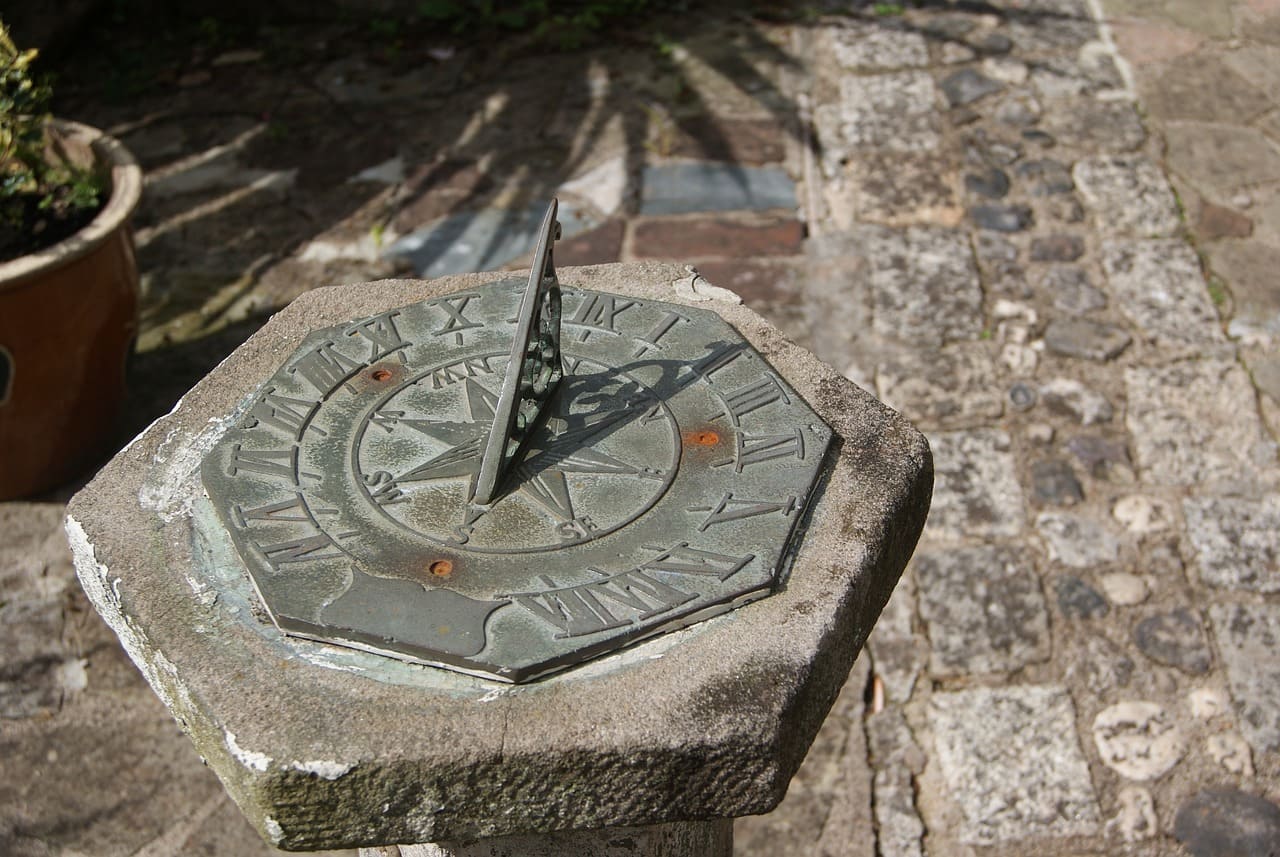
Mechanical Clocks
The second section of our exploration of clocks looks at mechanical clocks , engineering marvels that have played a vital role in measuring time and continue to fascinate with their intricate workings and beauty.
Mechanical clocks, particularly pendulum clocks and mechanical spring-loaded clocks , have been mainstays of timekeeping for centuries. They have been at the epicenter of daily life, adorning homes, churches, and public buildings, and playing a vital role in synchronizing human activities.
The operation of mechanical clocks relies on sophisticated mechanical principles. Pendulum clocks, for example, use the regularity of the pendulum's oscillations to measure time. A clockwork movement keeps the pendulum moving, and a train of gears ensures accurate time measurement. Spring clocks , on the other hand, use the energy stored in a spring to power the clock movement, which then regulates the speed of the clock mechanism.
The key components of these clocks include the pendulum or balance wheel (in the case of pendulum clocks), the clock mechanism, gears, hands and the dial. Each component is designed to perform with incredible precision, ensuring reliable and consistent time measurement.
Aside from their functionality, mechanical clocks were also works of art in themselves. Their cases were often beautifully ornate, combining function and aesthetics. Clockmakers of the time applied exceptional craftsmanship skills to create clocks that were both precise instruments and elegant collectibles .
Although mechanical clocks have largely been replaced by electronic clocks when it comes to precise timekeeping, they continue to captivate collectors and watch enthusiasts due to their historical heritage and timeless beauty. Their popularity in the past and their undeniable aesthetic appeal make them valuable witnesses to human ingenuity in the quest for temporal precision.
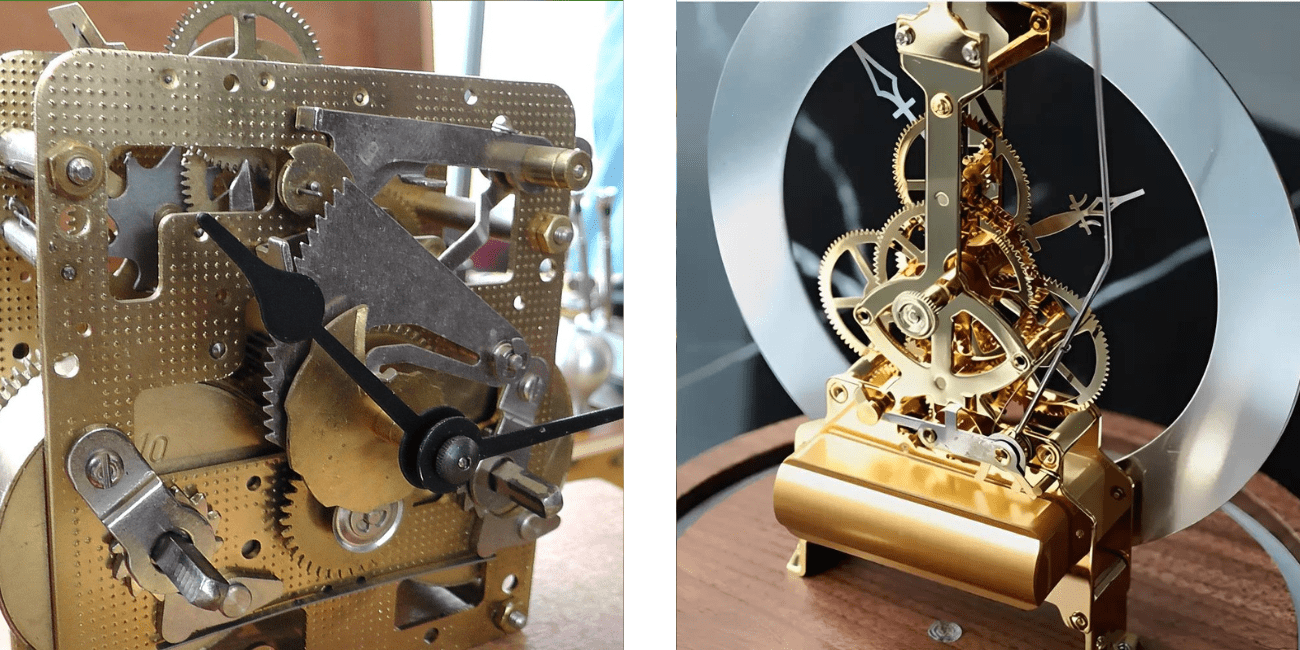
Electronic Clocks
The third section of our exploration of clocks looks at electronic clocks , devices that have revolutionized the measurement of time thanks to their unparalleled accuracy and reliability.
Electronic clocks include a variety of models , but two dominant types are quartz clocks and atomic clocks . Quartz clocks use a quartz crystal to generate a precise electrical pulse , which is then converted into a measurement of time. Atomic clocks , on the other hand, are the most precise of all , using the vibrations of atoms (usually atoms of cesium or other elements) to define with extreme precision the duration of a second.
The precision of electronic clocks is remarkable. Quartz clocks, common in watches and wall clocks with a quartz movement , can lose less than a second per day, while atomic clocks are so precise that they lose only a tiny fraction of time over billions of years. This precision has revolutionized our daily lives by synchronizing our activities, from global communications to navigation systems to power grids.
Electronic clocks enabled the creation of global time synchronization systems, such as International Atomic Time (TAI) and Coordinated Universal Time (UTC), essential for air, space, and maritime navigation. What's more, they are integrated into a multitude of devices, from computers to smartphones to GPS systems, ensuring that time is measured with unwavering reliability.
Electronic clocks marked a major milestone in the history of time measurement. Their exceptional precision has had a profound impact on our daily lives, enabling precise coordination of human activities on a global scale and ensuring that we are always in step with the passage of time. If you want to know how to hang a wall clock safely, consult our article HANGING A WALL CLOCK
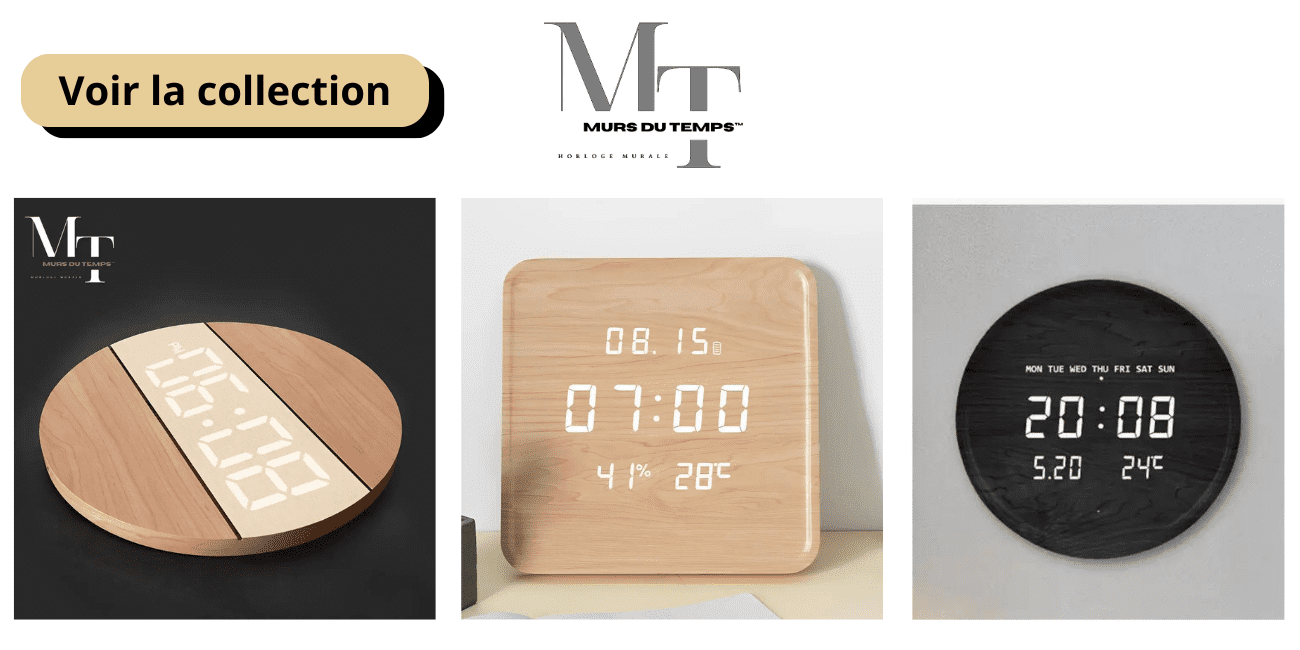
Digital and Smart Clocks
The fourth section of our exploration of clocks highlights digital and smart clocks , modern devices that combine functionality and technology to meet contemporary time management needs.
Digital clocks, such as clocks with LED and LCD displays , have become omnipresent in our daily lives. They offer precise and easy reading of time thanks to their digital displays . LED clocks , with their luminous numbers, are commonly used in low-light environments, while clocks with LCD displays are popular for their versatility and readability.
However, smart clocks mark the major evolution of watchmaking. They integrate advanced functionalities by connecting to the Internet and offering various applications. Smart watches, for example, offer much more than just measuring time. They allow you to receive notifications, monitor fitness, manage appointments, and much more. These clocks adapt to our busy lives by providing real-time information and making it easier to manage multiple aspects of our daily lives.
Smart clocks have also become fashion accessories and personal technology companions. They offer extensive customization, with interchangeable watch faces and third-party apps that expand their functionality. Their ability to sync with smartphones and computers makes them versatile tools for communication, productivity and entertainment.
Digital and smart clocks embody the successful marriage of watchmaking tradition and modern technology . They meet the needs of our times by providing precise time measurement while offering advanced features and customization. These clocks have become essential tools for time management and stylish accessories for technology enthusiasts.
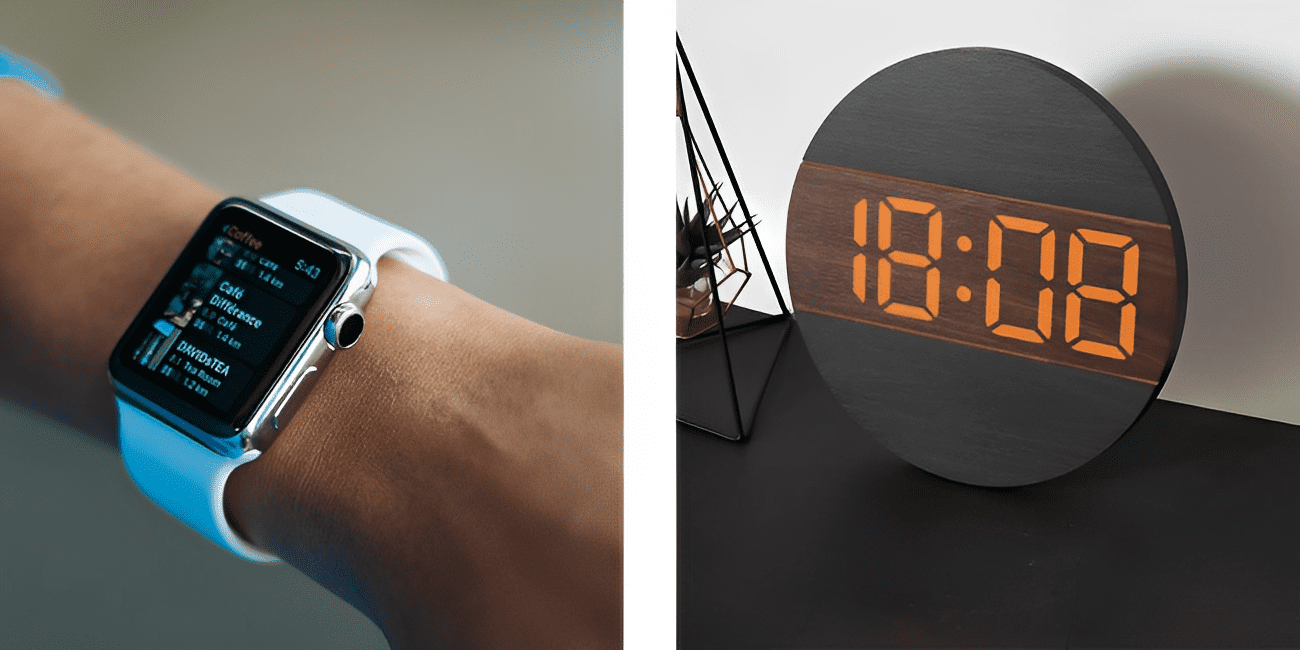
Solar and Lunar Clocks
The fifth section of our exploration of clocks focuses on solar and lunar clocks , ancient devices that draw inspiration from the cosmos to measure time in creative ways.
Solar and lunar clocks are fascinating accounts of how ancient civilizations used celestial movements to measure time. Solar clocks use the position of the sun in the sky to tell the time, while lunar clocks use the phases of the moon.
These clocks played a crucial role in maritime navigation, where measuring time accurately was essential to determining longitude. Sailors used solar clocks to calculate their position at sea, while lunar clocks , such as astrolabes and sextants, were essential for navigating using the stars and moon as reference points. These clocks thus contributed to the exploration and discovery of new lands.
Although solar and lunar clocks have largely been replaced by more accurate and easy-to-use devices, their current relevance lies not so much in their functionality as in their artistic and historical appeal. Today, many ornamental sundials adorn gardens and public squares, providing nostalgic charm and a reminder of the importance of celestial cycles in our understanding of time.
Solar and lunar clocks are also popular for their artistic appeal. Their sophisticated design and creative use of celestial elements make them prized collectibles and masterpieces in the art of watchmaking.
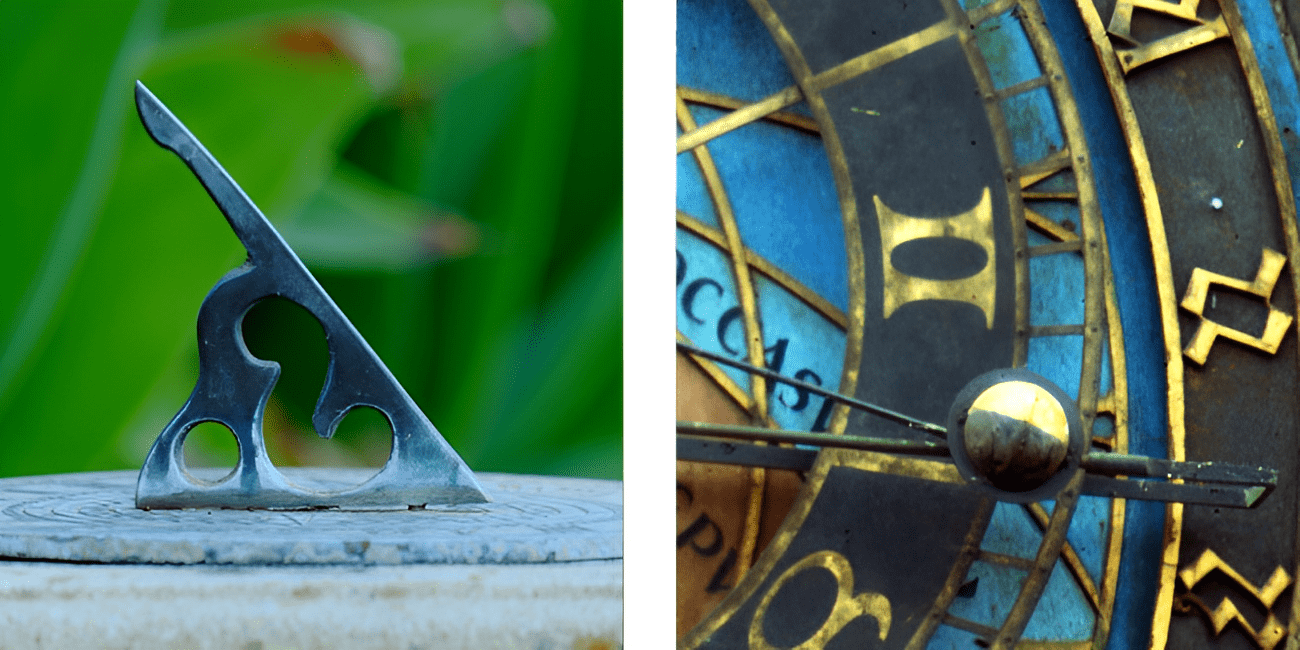
We hope this article was helpful to you in knowing What are the different types of clocks.
If you would like to receive our free e-book walls of time "THE ULTIMATE GUIDE" to choose the best wall clock for your home , other advice on interior decoration or be informed of exclusive offers on our products, do not do not hesitate to subscribe to our newsletter. We will regularly send you tips to improve the appearance of your home and keep you informed of current promotions in our Murs du Temps store. Thank you for choosing Murs du Temps for your interior decoration!


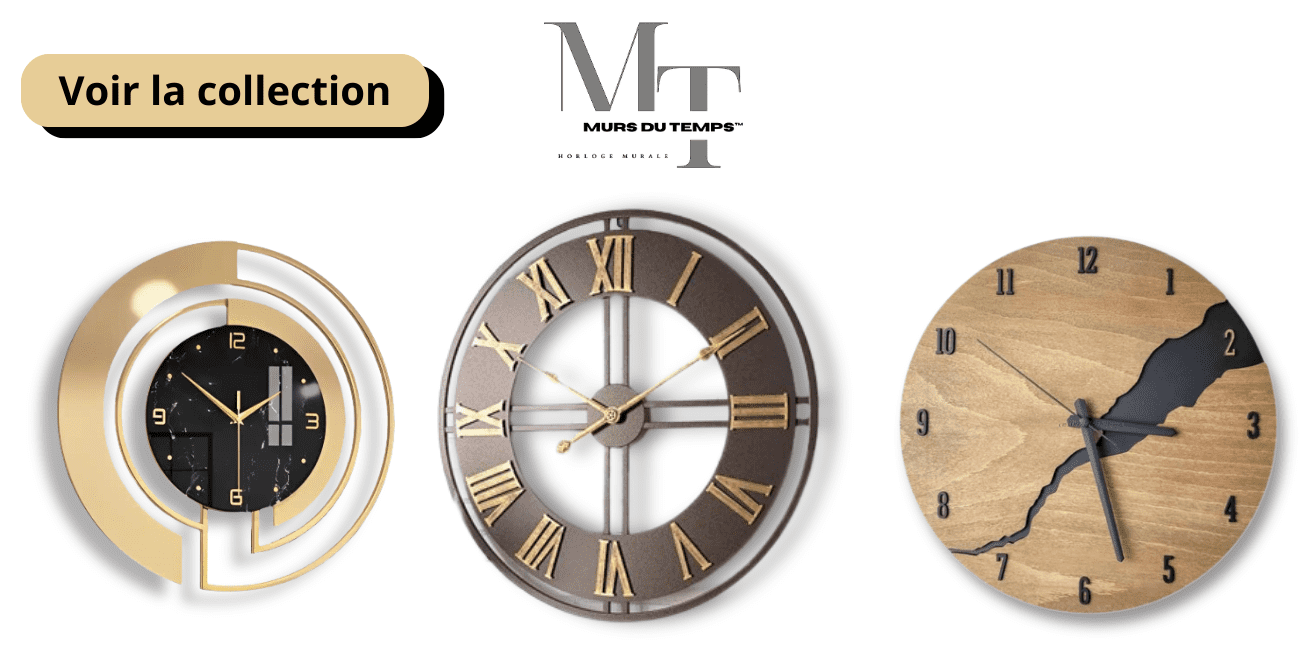




































Leave a comment
All comments are moderated before being published.
This site is protected by reCAPTCHA and the Google Privacy Policy and Terms of Service apply.